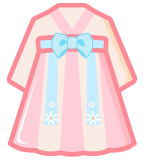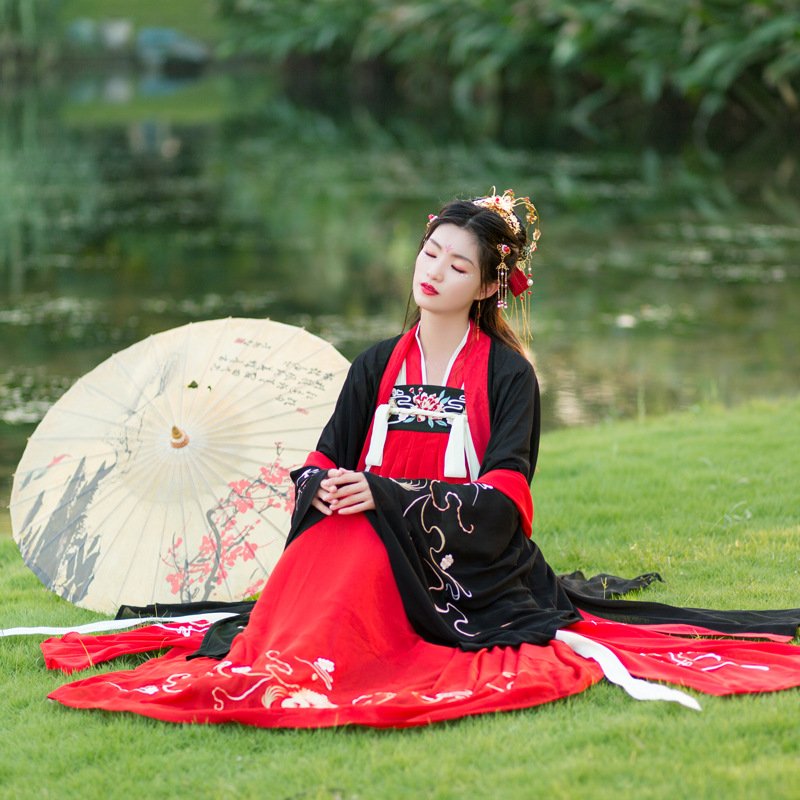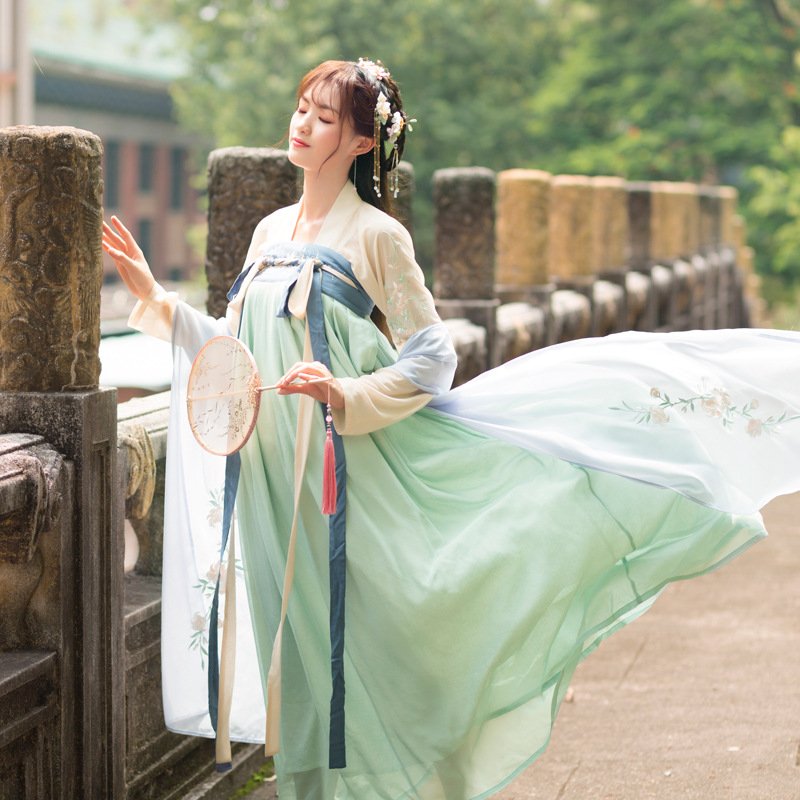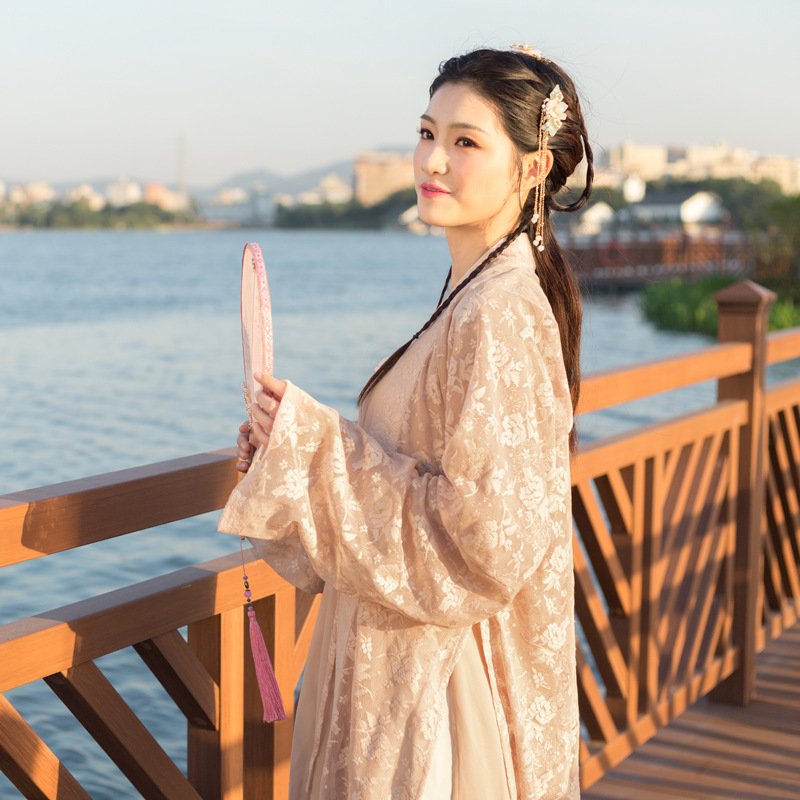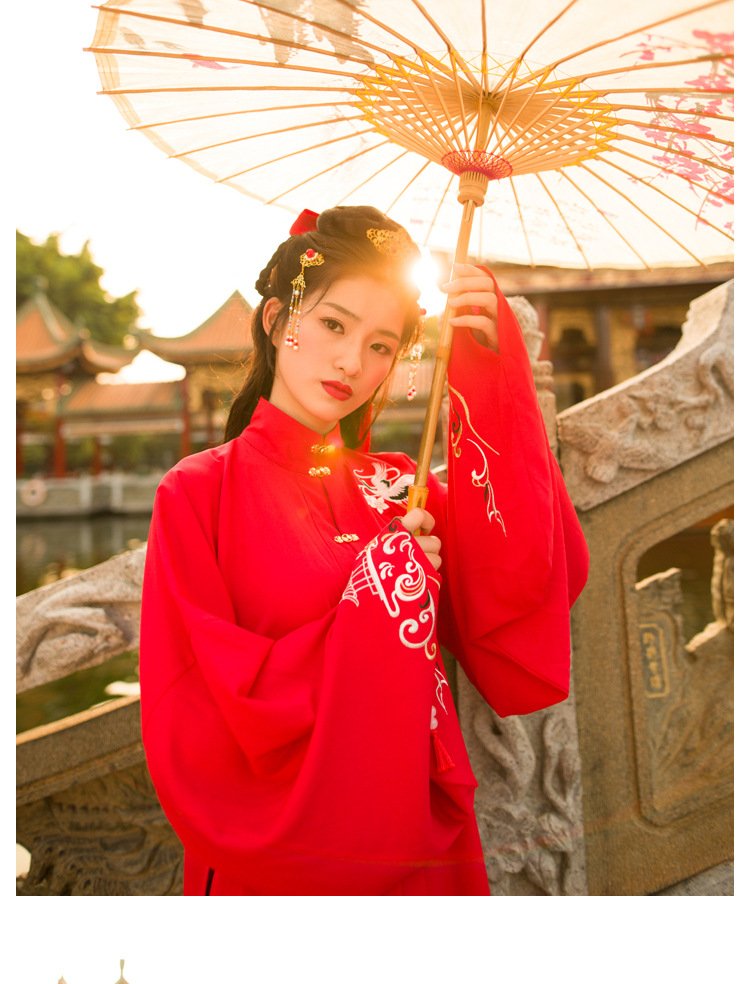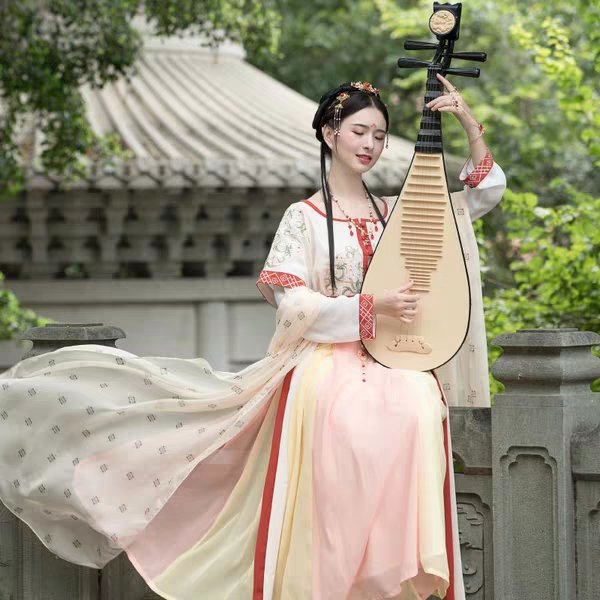Hanfu, the traditional clothing of the Han Chinese, holds great significance in Chinese culture and history. Rooted in ancient traditions and adorned with exquisite designs, Hanfu serves as a symbol of China’s rich heritage, reflecting its diverse regional customs and cultural expressions. In this article, we delve into the deep-rooted meaning of Hanfu, exploring its historical origins, stylistic variations, and the revival of interest in this majestic attire. I. Historical Origins of Hanfu:Hanfu’s origins can be traced back to the illustrious history of the Han Dynasty (202 BCE – 220 CE). During this period, a distinctive style of clothing emerged, known as Hanfu. Inspired by the philosophical principles of Confucianism and influenced by foreign cultures, Hanfu represented the traditional attire worn by the Han people during that time. Hanfu’s aesthetic charm and cultural significance soon spread across China’s vast territories. II. Components and Styles of Hanfu:Hanfu consists of several key components, including tops, skirts, robes, and accessories, each contributing to the rich and diverse array of styles that exist within this traditional attire. Some of the notable styles of Hanfu include the Ruqun, Quju, Beizi, Zhiduo, Shenyi, and many others. These varying styles represent different historical periods, social status, regions, and even ceremonial occasions. III. Symbolism and Significance:Hanfu holds deep symbolic meaning, embodying the essence of Chinese culture, identity, and aesthetics. The choice of colors and patterns in Hanfu conveys specific messages and social connotations. For instance, bright and vibrant colors are often worn during festive occasions, representing joy and prosperity, while muted and elegant shades are associated with mourning or solemn events. Furthermore, the selection of specific accessories and intricate embroidery on Hanfu showcases the wearer’s taste, personality, and cultural affiliations. IV. Regional Variations of Hanfu:China’s extensive geography and diverse ethnic groups have given rise to various regional styles of Hanfu. From the Hanfu of the northern regions, characterized by generous and flowing garments, to the refined elegance of Hanfu in the southern regions, these regional variations highlight the distinct cultural identities and historical influences that shaped Hanfu’s evolution through time. V. Revival of Hanfu:In recent years, the revival of Hanfu has gained significant momentum, as a growing number of Chinese individuals embrace their cultural heritage and express their pride through wearing traditional attire. Hanfu enthusiasts organize gatherings, events, and even weddings, providing a platform for people to connect with their past and share their passion for Hanfu. VI. Challenges and Controversies:Despite its resurgent popularity, the revival of Hanfu is not without challenges and controversies. Some argue that the contemporary interpretation of Hanfu lacks historical accuracy and is merely a commercialized version for entertainment purposes. Others believe that Hanfu promotes conservative values and restricts individual expression. Addressing these concerns while preserving the authenticity of Hanfu poses a delicate balance for its enthusiasts and the wider society. VII. Hanfu in Modern Times:Hanfu, apart from being cherished as a cultural relic, has also left a profound influence on contemporary fashion and design. Elements of Hanfu can be found in modern garments, accessories, and even in international runways, indicating its immense impact on global fashion trends. VIII. Promoting Cultural Exchange:The resurgence of Hanfu has transcended national boundaries, leading to increased cultural exchange and fascination from individuals around the world. Hanfu enthusiasts host international festivals, workshops, and exhibitions, providing an opportunity for people of different cultures to come together, learn, and appreciate the beauty and history of Hanfu. This cultural exchange fosters mutual understanding and strengthens global connections. IX. Hanfu and Identity:For many individuals, wearing Hanfu is not only a celebration of Chinese culture but also a way to connect with their own personal identity. Hanfu allows people to express their individuality while honoring their cultural heritage. It serves as a tangible link to the past, connecting present generations with their ancestors and the traditions that shaped their identity. X. Education and Preservation Efforts:With the renewed interest in Hanfu, efforts are underway to educate the younger generation about the significance and importance of this traditional attire. Schools and cultural organizations are incorporating Hanfu into their curriculum, organizing workshops, and arranging visits to historical sites where Hanfu was prominent. These initiatives aim to preserve the knowledge and craftsmanship associated with Hanfu and ensure its continuation for future generations. XI. Hanfu and Tourism:The popularity of Hanfu has also had a positive impact on tourism in China. Many historical sites and heritage towns have embraced the revival of Hanfu, offering visitors the opportunity to rent or purchase Hanfu attire for a more immersive cultural experience. This trend has not only boosted tourism revenues but also deepened the appreciation for China’s rich history and traditional culture. XII. The Intersection of Tradition and Modernity:As Hanfu gains recognition and acceptance, it is also evolving to adapt to the demands of modern lifestyle and fashion sensibilities. Contemporary designers are reinterpreting Hanfu in innovative ways, combining traditional elements with modern aesthetics. This fusion allows Hanfu to remain relevant and attractive to younger generations who seek to incorporate aspects of tradition into their daily lives. XIII. Hanfu Beyond Fashion:Beyond fashion and aesthetics, Hanfu has cultural and social significance. It promotes a sense of belonging, cultural pride, and unity among communities interested in preserving and celebrating their heritage. Hanfu enthusiasts often engage in activities that go beyond clothing, such as participating in historical reenactments, organizing traditional music and dance performances, and advocating for the preservation and revival of other aspects of traditional Chinese culture. XIV. Hanfu in the Digital Age:With the advent of the digital age, Hanfu enthusiasts have leveraged technology to spread knowledge and promote the beauty of Hanfu worldwide. Online communities, social media platforms, and dedicated websites have emerged, providing a space for enthusiasts to share their thoughts, experiences, and creativity. These platforms serve as a hub for discussions on historical accuracy, style inspiration, and even DIY tutorials, further fueling the passion for Hanfu. XV. Hanfu and Gender Identity:One notable aspect of Hanfu is its ability to transcend gender boundaries. While Hanfu traditionally had distinct styles for men and women,
